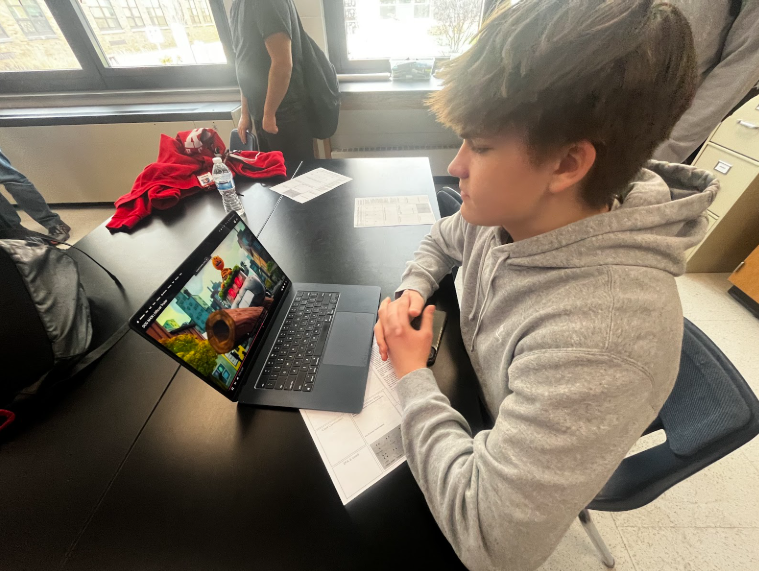Hinsdale Central is all but modest when it comes to boasting about the wide variety of courses it offers. All of these courses fall into four defined categories. There are the general classes, the regular classes, the honors classes, and the AP classes. There is no question that Central pushes its students to succeed. Unfortunately, due to a variety of pressures, (college, parents, etc.), sometimes this push can feel more like a shove with many students feeling compelled to enroll in the highest levels of courses offered. The bottom line is many Central students are honors course vultures. They are deterred by any course that does not provide an honors option despite holding a genuine interest in the material. However, on the opposite side of the spectrum, there are students who take courses they are actually interested in without the concern for the GPA effects. That being said, our school and faculty have admirably taken strides to balance the ambitions of these two groups.
This year, Mrs. Pat Potokar, art teacher, teaches an honors option for her Digital Imaging class. While honors students were previously reluctant to take Digital Imaging, a prime example of a course that colleges extract when calculating GPA, they are now enrolling by the masses.
“There class is almost half and half between honors and non-honors students in Digital Imaging 3, and this is just the first year,” Potokar said.
Not only is Digital Imaging an honors option, but it is an exclusive one too. “In order to get into honors, you have to provide a portfolio, and you cannot get into the honors option unless you enroll in the regular option first and then try out to be in the honors,” Potokar said.
Since the class is a mix of honors and non-honors students, Potokar has tried to find a balance between the two curriculums so the non-honors students are not overwhelmed and the honors students are not twiddling their thumbs. “The one thing that we have tried to do with this course is add more rigor, not busy work. The rigor comes in with a more thorough thought process so the non-honors students have their hands full with what they are doing and the honors kids are not sitting around waiting for others,” Potokar said.
The effects of the immersion of non-honors and honors students in one classroom are far from chaotic. In fact, it has proven beneficial for both groups. “The honors kids are taking more of a leadership role, and they act as good role models by having to generate more thought out and problem solving ideas, Potokar said. “My intention is that the honors students will take on leadership roles in the classroom.”
Emily Morris, junior, sees the positive effects that honors students have on the non-honors students in her German 3 class. “Having non-honors students in the class does not hinder anything, and it’s nice because a lot of the honors students are really enthusiastic about it,” Morris said. “I think the non-honors kids are motivated by the honors kids. When students receive stickers for getting an A on their test, they put them on the door in the classroom. and sometimes if there are more honors kids getting stickers than the non-honors students, they are motivated to get ones too. They are also motivated to participate in class.”
While the honors students motivate the non-honors students, the non-honors students bring much to the classroom as well. “I think it has opened up creativity in terms of how I deliver the curriculum and how I teach etc. With that being said, because I have a mix of students, there are a variety of skills brought to the table providing a unique atmosphere,” said Mrs. Johanna Jurgens, German teacher.
What is most impressive about Jurgen’s enthusiasm is that the mixture of her honors and non-honors students is not intentional but results from a lack of enrollment in German 3. “I want to accommodate all of my students to have the opportunity to take this the class,” Jurgens said.
Obviously, if the honors option were not available for German, many students would not take the language. It is possible to teach a course like German 3 effectively to honors and non-honors students even when the students are all at very different levels of learning.
Jurgens said, “I’ve actually had German 3 non-honors, German 4 honors and AP in one class, and I had to make do. I make every situation work. I take a lot of time to check for understanding, and they have been trained to ask questions. Also, just like any other class, I have to consider my audience. I have to rephrase and sometimes it’s choosing my language carefully.”
“I think that the mix of students is a great thing for me,” Morris said. “ One thing that really helps me learn is helping other people and explaining things to them, and we do a lot of group work and doing things together in our group brings different things to the conversation and allows me to learn better.”
Although both Potakar and Jurgens are trying to make the best of their situations by accommodating Central’s honors-crazed mentality, both have successfully made amazing efforts to ensure that students can take their chosen class without a GPA decrease. Hopefully it won’t be long before the administration allows for more honors options in other electives. After all, the courses we take in high school should provide us with the opportunity to find a passion for something we wish to pursue in college and for the rest of our lives.








